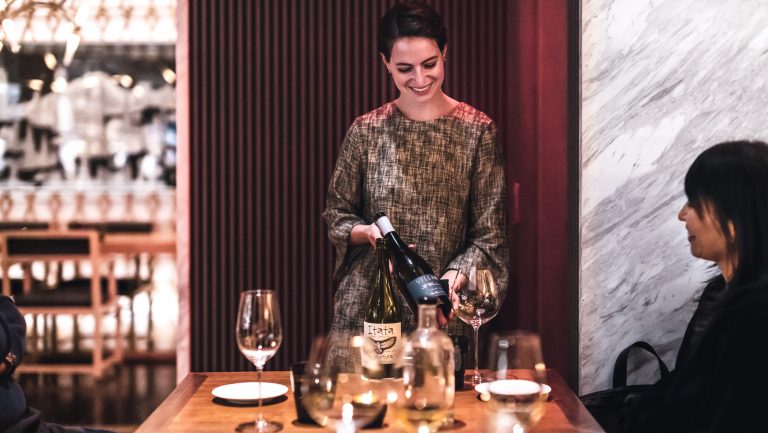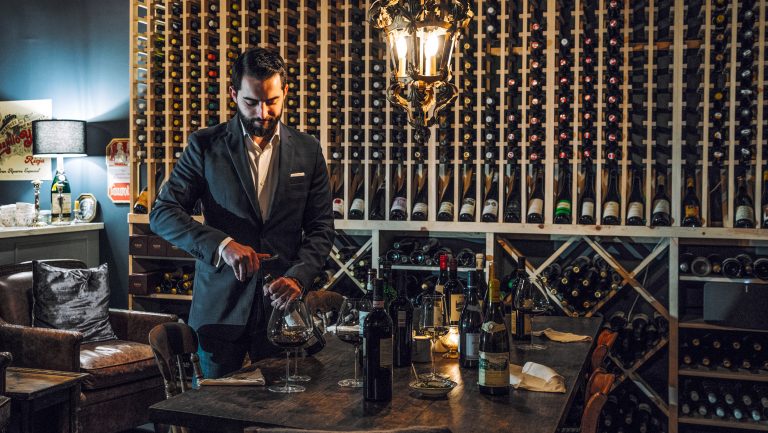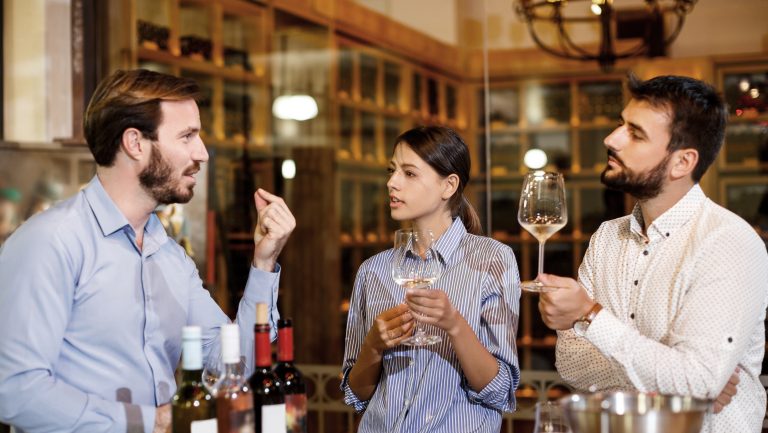Managing a successful wine program at a restaurant is a huge job. Not only does it require creating an engaging, thoughtful selection of wines, but a beverage director also needs to successfully manage the financial and logistical aspects of running the program. But what if that carefully curated wine list changes annually or even quarterly, requiring that the program essentially be built from scratch over and over again during the wine director’s tenure?
That’s the challenge some beverage directors across the U.S. have taken on in their unique positions of managing seasonally rotating wine concepts. While tasks like ordering, budgeting, managing inventory, and educating staff and guests may be a bit more complicated because of these ever-changing programs, the process also has unexpected rewards.
Restaurant Rotation
It’s typically the overarching restaurant or chef concept that spurs a wine program to rotate seasonally. The restaurant Intersect by Lexus in New York City features an up-and-coming guest chef from a different country every four to six months, and the wine reflects that chef’s background and cuisine. For Intersect’s first chef, Greg Marchand, from Frenchie in Paris, the beverage director Andrea Morris created an all-French program focusing on Marchand’s three favorite regions: Burgundy, the Rhône Valley, and the Loire Valley. Beginning in April, Sergio Barroso, the Spanish-born chef of Restaurant 040 in Santiago, Chile, took up residency, so the wine list became Chile-centric, with complementary Spanish selections. But there’s one section of the list that never rotates. “The only thing that doesn’t change is Champagne,” says Morris. “Champagne is forever.”

Don’t miss the latest drinks industry news and insights. Sign up for our award-winning newsletters and get insider intel, resources, and trends delivered to your inbox every week.
Though change has always been a constant at Curtis Stone’s Maude in Los Angeles, the restaurant’s overall concept shifted at the beginning of 2018 from monthly tasting menus to quarterly regional menus—and now wine is at the forefront. “The reinvention of concept is a quarterly menu inspired by [one of] the world’s great wine regions,” says Andrey Tolmachyov, Maude’s head sommelier. In 2019 the restaurant has featured dishes and wines from Western Australia, Sonoma, and Champagne, which is the current iteration.
At One Fifth in Houston, the idea of changing concepts stemmed from the offer of a five-year building lease. Rather than turn down the short-term lease, chef Chris Shepherd decided to open five different restaurant concepts in the same space, each for one year. Following a steakhouse, a Romance language concept—featuring the wines and foods of France, Italy, and Spain—and a concept with a Mediterranean focus, One Fifth Gulf Coast will debut on September 1, featuring lighter sparkling, white, and red wines from around the world, with a domestic emphasis.
Though the idea of new food and beverage concepts is built into all three of these restaurants, managing guest expectations is still necessary. “Some of [Intersect’s] guests don’t even know that we rotate chefs,” says Morris, “so they’re surprised that the list is so focused, but when we explain to them what our concept is, they usually get into it.” In fact, guest curiosity may outweigh the desire for the familiar. “People are always sad when their favorite bottle goes off the list,” she says, “but I think this happens at all restaurants. I’ve been really surprised at how open people have been in trying new wines and varieties they’ve never heard of before.”
Although a changing program makes the sommelier a master at steering guests toward what may become new favorites, the rotating inventory also creates an insurance policy to accommodate for the traditionalist. “I was really nervous to do the Chilean and Spanish list because most of the wines are unfamiliar to most of our guests,” says Morris, “so I actually have some leftover Bordeaux and Burgundy in the cellar just in case, but I haven’t even had to offer it yet.”

Mastering Logistics
Dealing with guests is one thing, but dealing with logistics is a whole other animal. Because One Fifth overhauls its concept annually, from the decor to the staff uniforms, the restaurant closes for the month of August to prepare, allowing its wine director, Matt Pridgen, to have some flexibility with ordering. “I start looking for placements about two months before we shut down at the end of July,” he says, “and add wines slowly up to that time.” But the bulk of the 220-bottle program, including the by-the-glass (BTG) list, is added in August.
Intersect also closes for a few days between guest chef residencies in order to train staff members on the menu, chef, wine regions of focus, and BTG selections, but Morris tries to have everything prepared before this time so she can focus on education. She starts ordering for the new concept about a month before it launches. Because Maude doesn’t close between regional focuses, Tolmachyov also needs three to five weeks to sort out logistics for the new program.
Managing storage space while minimizing waste is one of the biggest challenges for any beverage director, but it becomes particularly crucial for rotating programs. “For me,” says Morris, “it’s all about forecasting and analyzing.” Instead of ordering large amounts of BTG wines in the final four to six weeks before a new residency, she will instead phase in wines from the 100-bottle list or offer BTG and pairing specials. Morris also orders mixed cases from importers who don’t charge a split-case fee so she can keep one bottle of each selection in stock until the end of a chef’s tenure. “It’s kind of like playing wine list Tetris.”
Tolmachyov has more flexibility with leftover inventory because Maude’s 700-bottle list includes wines from past concepts, but storage space for new regional focuses must be carefully carved out. “We have guests spend time in the cellar as a part of their experience,” he says, “so I need to make sure everything looks perfect.” Because most guests opt for one of Maude’s three wine-pairing menus, this is where Tolmachyov can get creative toward the end of a concept. “That is the time when pairings and BTG change pretty much on a daily basis,” he says. Pridgen likes to employ sales incentives for staff members at One Fifth in order to move wines that will not fit the restaurant’s next concept, and Morris offered a discount wine night on the last evening of Intersect’s French program.

Pridgen cites budgeting as his biggest challenge. “I could easily spend way more than I should,” he says, “especially at the beginning of each new concept.” However, it’s important for him to maintain competitive pricing, even with trickier cost management. At Intersect, the management team accommodates for the rotating concept by taking a broader look at cost of goods sold (COGS). “Some months my COGS will be really low,” says Morris, “usually in the middle of a chef cycle as the whole list is fully stocked, while during the last month of the current cycle and the first of the new cycle, they’ll be disproportionately high.” While the restaurant does look at month-to-month costs and budgeting, period-to-period financials are also considered.
Reaping the Rewards
Though managing a seasonal wine program can be challenging, the challenges are useful because they regularly test essential beverage-management skills. But the rewards go beyond inventory management and cost analysis.
“The biggest reward is pushing myself out of my comfort zone,” says Morris. The Chilean-focused concept, for instance, allowed her to deeply explore a region that she had largely overlooked. “I tasted just about every Chilean wine available in [New York City], opened accounts with importers I had never heard of, and really studied the region intensively.”
“It’s a challenge to accurately capture the nature and image of a whole wine region for our guests,” says Tolmachyov, noting that he wants to educate guests about each concept in depth. “But I get to really put together a list that represents my vision of a wine region—and present that alongside some spectacular dishes.” Morris agrees, saying, “It’s a great way to try on different lenses and continue to refine my own point of view while celebrating different cuisines and countries.”
In a way, running a changing wine program offers the sommelier something new to go with the consistency of the familiar. “When we swing open the doors again, it’s a new restaurant,” says Pridgen. “But in a way it isn’t. We have a very loyal clientele, so they’re always incredibly excited to see the changes we’ve made.”

Dispatch
Sign up for our award-winning newsletter
Don’t miss the latest drinks industry news and insights—delivered to your inbox every week.
Courtney Schiessl Magrini is the editor-in-chief for SevenFifty Daily and the Beverage Media Group publications. Based in Brooklyn, she has held sommelier positions at some of New York’s top restaurants, including Marta, Dirty French, and Terroir, and her work has appeared in Wine Enthusiast, GuildSomm, Forbes.com, VinePair, EatingWell Magazine, and more. She holds the WSET Diploma in Wines. Follow her on Instagram at @takeittocourt.







